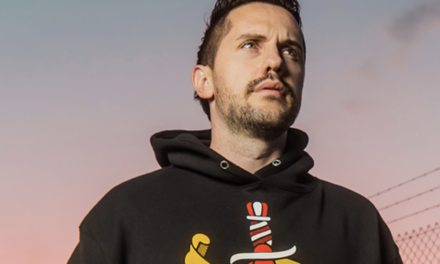full tilt
Copyrights and Fair Use
Content creators (and others) often use their mouse to right click, copy image, and paste it into their content.
Some call it “borrowing.” Some justify the usage by crediting the original creator or source.
But all those linguistic gymnastics don’t change a thing. You may be violating the owner’s copyright. (And after all, you wouldn’t like someone to do that to you.)
It’s time for a refresher course on copyrights, fair use, and public domain.
Creators own the copyright from the moment they create it. Unless they transfer those ownership rights or create it as “work for hire,” they get to determine how their creations are used.
The US Copyright Office explains: “Copyright is a type of intellectual property that protects original works of authorship as soon as an author fixes the work in a tangible form of expression. In copyright law, there are a lot of different types of works, including paintings, photographs, illustrations, musical compositions, sound recordings, computer programs, books, poems, blog posts, movies, architectural works, plays, and so much more!”
CAVEAT: When you reproduce original content from a third party, secure their permission first.
Well, the cost could be high. Civil copyright infringement fines range from $750 to $30K per work infringed, as the University of Arkansas explains. (Willful copyright infringement, which is a criminal violation, can lead to prison time and significant fines.)
The copyright owner benefits if they pursue the litigation route by having previously registered their works with the US Copyright Office. They can seek certain monetary damages and attorney fees and sue with the presumption the registration is correct.
The Digital Millennium Copyright Act offers creators another avenue to get the allegedly offending creations removed whether they’ve registered the work or not. The creator can issue a takedown notice to internet service providers, search engines, hosting firms, and other online site operators. They send a notice to the person accused of the violation, who can respond. But often, the takedown notice leads the user to remove the material.
What about fair use? The US Copyright Act provides some exceptions and limitations often referred to as “fair use.” Among the uses of a copyrighted work that is acceptable are criticism, comment, news reporting, teaching, scholarship, and research. “Transformative” uses are often OK as they add something new with a further purpose or different character and do not substitute for the original use of the work.
However, no word count, image size, use frequency, etc., are detailed, so each circumstance is decided on a case-by-case basis.
What about the public domain? Creators can’t copyright facts or discoveries – all of that is in the public domain and usable without permission. When a copyright expires, the work enters the public domain. But that takes a long time. For works created after 1977, it’s the creator’s life plus 70 years. If the creator is anonymous, it’s 95 years from publication or 120 years from creation, whichever is shorter.
– Ann Gynn
Get the full story and resources on copyrights.
sponsored content
Creating unique, engaging content is now 10x easier
Are you looking to drive more organic traffic and leads to your website? Content marketing is a powerful tool, but it takes a lot of time and effort.
Well, not anymore!
Check out ContentShake by Semrush—a content writing tool that powers your topical expertise with AI and competitive data.
Use it to generate content ideas, quickly assemble your articles, optimize them for engagement and rankings, and publish directly to your blog.
Are you ready to scale your content creation?
content entrepreneur spotlight
Entrepreneur: Anthony Fasano
Biz: Engineering Management Institute
Tilt: Helping engineers and engineering firms grow
Primary Channels: Podcasts, YouTube (33K subscribers across three channels)
Other Channel: Blog
Time to First Dollar: 2 years
Rev Streams: Sponsorships, learning and development programs
Our Favorite Actionable Advice:
- Don’t go for big audiences: Identifying a content tilt that appeals to a mass audience is a mistake. Find a niche, as Anthony did with engineering career advice, that will appeal to an interested audience.
- Be ready for ups and downs: When a primary client left, Anthony had to return to a traditional job, but he didn’t stop working on EMI. Five years later, he became a full-time content entrepreneur and expanded his business.
- Partner up: Anthony works with industry associations in cross-promotion trades. He gives a free podcast sponsorship in exchange for access to their audiences.
– Sarah Lindenfeld Hall
Read our full story of Anthony Fasano.
Know a content creator who’s going full tilt? DM us. Or email [email protected].
tales from a creator
At the first Creator Economy Expo in 2022, three Tilt community members got something they weren’t expecting: The birth of a weekly podcast!
Michelle Peterson Clark, Marc Angelos, and Mike Neubauer discovered their shared interest over CEX lunches and the Web3 stream of talks. By the end of 2022, they launched Web3 By Three with YouTube channel, LinkedIn Live, and Twitter Spaces.
At CEX 2023, they reunite in person to do a live podcast at the Evergreen Podcasting booth at 4 p.m. May 3.
Join them. And who else might you meet there and where could it take your content business?
Read Michelle Peterson Clark’s take on the CEX-born adventure.
New feature: Do you have a tale to share about your life as a creator entrepreneur? Reply to this email or let Ann know.
things to know
Money
-
10% or less: A Citi survey says 90% of Substack revenue goes to less than 10% of writers and that’s similar to Twitch and YouTube ratios. (PYMNTS)
Tilt Take: Multiple revenue streams are a must for a viable content business. -
$480B: That’s the figure for the creator economy ecosystem by 2027. It’s at $480B today, according to Goldman’s research. The growth equates to the expected increase in global digital ad spend in that time. (Goldman Sachs)
Tilt Take: Ad growth shouldn’t be the only number that counts in the creator economy growth (and it certainly shouldn’t be the only stream in your business).
Audiences
-
Telling signals: Performance for a LinkedIn post depends on three key categories – the author, engagement signals, and temporal signals, such as the velocity of likes/reactions, shares, comments, and views. (Social Media Today)
Tilt Take: An author’s presence on the platform makes a difference. LinkedIn says it assesses followers and connection counts, diversity in industry, location, and level of their network. -
Not just like me: A newly released study finds when you have something in common with someone else, you overestimate your overall similarities with each other. (Science Daily via Hidden Brain)
Tilt Take: Even if you are a member of your target audience, don’t assume the rest think and act as you do. Conduct research to find out, from one-on-one conversations to focus groups to analytics of your content.
Tech and Tools
-
Pay and pay some more: Twitter now seems to require advertisers to have verified checkmarks (i.e., pay for Twitter Blue) to run ads on the platform. (Tech Crunch)
Tilt Take: Before you pay, check your analytics. Is your audience still as active on Twitter as they once were? -
Will and Steven: Google updated its AI-generative content tool Bard to provide more diverse drafts. It’s intended to foster greater creativity and out-of-the-box thinking by users. (Search Engine Journal)
Tilt Take: Shakespeare or King or something else? Bard can help show you potential voices and ideas to consider for your content. Use it to learn, not to publish.
And Finally
-
ChatGPT asks: Josh Spector turned to ChatGPT to interview him about his For The Interested newsletter. He answered AI-generated questions about inspiration, challenges, examples, and the future. (Josh Spector via ChatGPT)
Tilt Take: Here’s another idea on how to use AI-generative tools to help inform your content development process.
the business of content
- Time to Rethink Your Destination? (Content Inc.)
- Twitter X and Its Boujie Verification Service (This Old Marketing)
- Follow this step-by-step guide to inform your business startup (Business News Daily)
- Have you heard this “best” advice for entrepreneurs? (Entrepreneur)
- Check out For The Interested Newsletter by The Tilt’s friend Josh Spector. It’s a newsletter that shows creative entrepreneurs how to produce, promote, and profit from their creations based on how others have successfully done it.*
*The Tilt receives a small commission if readers (at no additional cost) make a purchase using this link.
Share The Tilt Newsletter with other content creators and get exclusive swag and more. Your unique link: https://www.thetilt.com?rh_ref=[RH CODE GOES HERE] Track your referrals hereBe Part of the TILT Nation with Our New Rewards Program
Or share via Twitter, LinkedIn, Facebook, or email.
*Please note the rewards program is only available to US readers at this time. The Tilt reserves the right to reject referrals at their discretion.
the tilt team
Your team for this issue: Joe Pulizzi, Pam Pulizzi, Ann Gynn, Laura Kozak, Marc Maxhimer, and Dave Anthony with an assist from Sarah Lindenfeld Hall.
Get more of the Full Tilt stories on TheTilt.com.
Know a content creator who’s going full tilt? DM us or email [email protected]
Want to advertise on The Tilt? Go here.
Or email us at [email protected]
Interested in the tools we use? Check out our Tilt Tech Stack here.
Was this email forwarded to you? Get your own sub here.
Copyright ©2023 Tilt Media LLC All rights reserved.
Update your preferences | Unsubscribe | 17040 Amber Drive, Cleveland, OH 44111







